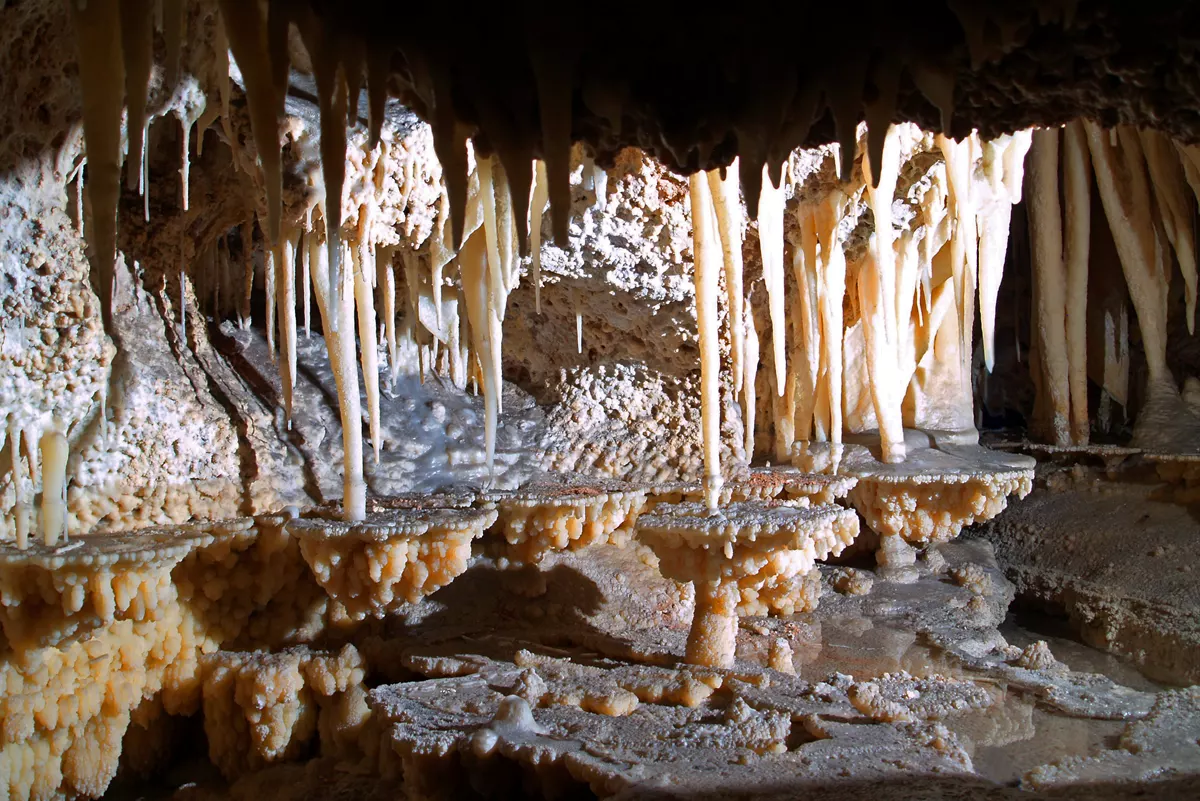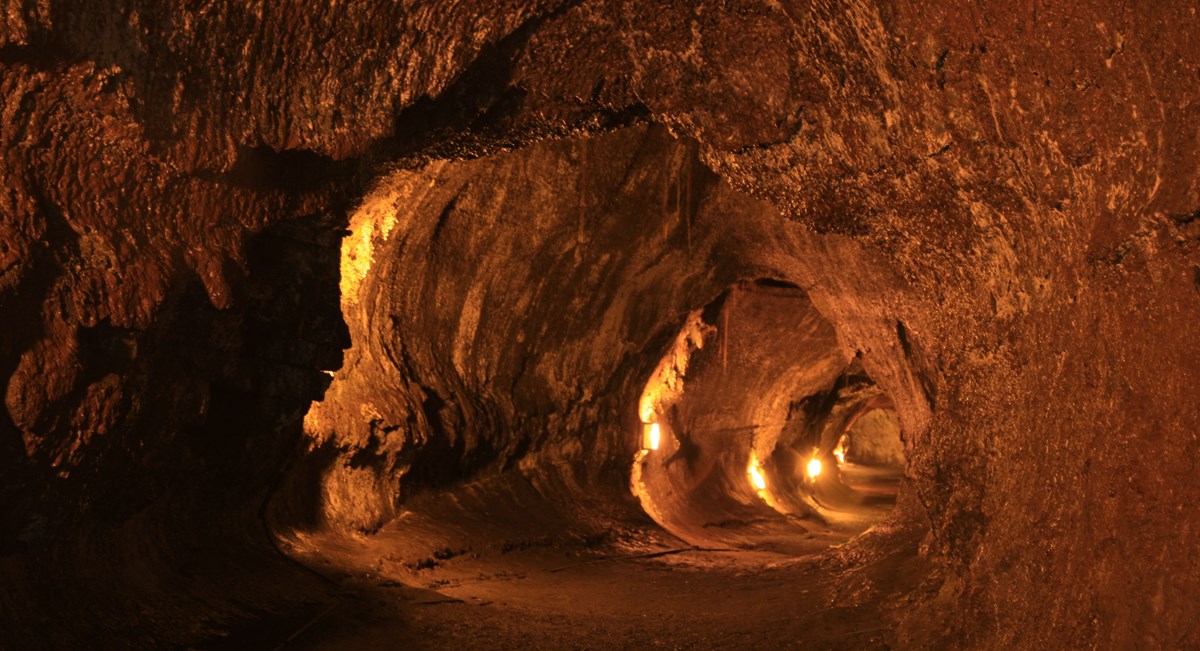By Reilly Sleater and Ryan Kirby
What is a Solution Cave?
Karst is a term used to describe a specific type of landscape that includes sinkholes, sinking streams, caves, springs, and other characteristic features. In fact, ¼ of the world’s population depends upon water supplied from karst areas.
Solution caves are part of the karst geology. They are one of the five major types of caves. Solution caves are a unique kind of cave that is formed through both chemical corrosion and physical erosion. Chemically, these caves are initially formed via the dissolution of porous, soluble rocks. These kinds of rocks are most commonly limestone, but can also be marble, dolostone, and gypsum. The dissolution process of these permeable rocks requires the presence of acidic water, which trickles through the cracks and holes of the rock and eats away at the surrounding rock. Once the water starts dissolving the surrounding rock, over time, these cracks and openings in the rock physically expand and become larger. Thus, how solution caves have come to be.
Another feature of karst landscapes is the presence of an aquifer. While water is passing through the subsurface karst rock, it will also move through two distinct areas or zones within the aquifer. The first zone the water passes through is called the zone of aeration. This is the area above the water table where the majority of pores or spaces within the rock are filled mostly with air. The next zone where the water passes through is called the zone of saturation. This is the area under the water table where the rock is completely saturated with water. Between these two layers is the capillary fringe. The capillary fringe is the boundary where the attractive forces between the molecules of water and rock will cause the rock to “suck” up water, thus forming the capillary fringe. What does this have to do with caves? The cave passages containing air would be within the zone of aeration. The zone of saturation falls somewhere below these passages. Cave-forming processes may occur within any of these zones, wherever water has been flowing.

While these solution caves are home to the iconic stalactites and stalagmites, the large drip-like features sinking from the ceiling and rising from the ground that many people think of when they think of caves, the requirements that these landscapes have limestone and be carved by rain makes them likely unique to Earth.

What is a Lava Cave?
Meanwhile, lava tubes, or lava caves, are formed from river-like flows of lava seeping away from a volcano. As these flows creep away from the volcano, the faster core of the flow stays warm longer than the edges, which begin to slowly crust over, much like how the edges of a river freeze before the center. Before long, even the top of the flow will crust over, fully surrounding the magma flow with newly cooled igneous rock. Now insulated by this self-made “ceiling”, the volcanic flow expands downward in a process called volcanic erosion. Once the volcanic eruption has ended, the magma can begin its year-long process of cooling from its 1000 °C temperature, forming small dripping formations on the ceiling as it subsides and vacates the lava tubes.

These newly carved caves offer an enticing home to life of all kinds, from mammals to microbes, some of which don’t rely on outside resources at all. For example, some biofilm, or large coatings of microbial communities that live on the walls of these caves, are chemolithoautotrophic, meaning that they feed on the minerals and carbon dioxide within the caves for energy, much like how photosynthetic plants feed on sunlight for their energy.
The igneous rock formed by this process is known as basalt and has chemical compositions dominated by iron, magnesium, and calcium. This basalt is porous, light in weight, and low density, with an abundance of empty cavities, called vesicles, which give the rocks a sponge-like appearance. Since these caves, and therefore these basaltic rocks, are the byproduct of active volcanic activity, they are common here on Earth, and even throughout our solar system. For example, Mars is home to the largest volcano in the solar system, Olympus Mons, which is surrounded by ancient lava flows that cooled millions of years ago, now leaving only empty caves with these basaltic minerals and the gases from the surface-level of Mars’ atmosphere, such as carbon dioxide. Having the same minerals and gases that allow these chemolithoautotrophic microbial colonies to thrive here on Earth makes them an intriguing prospect for life on the red planet.
